I'm back.
With so many ideas and suggestions I decided to print thread, highlight comments and respond - plus this will help to keep all the and ask together in one post for others in the future.
-Baffle In Place - I checked mine and it seems to be in place and pushed all the way back into stove
-Don't Use Ammonia - Used a diluted version once but now use a loosley balled up newspaper and straight water - works well
-Oak needs 2-3 years and maple/cherry 1 year to season - I remembered that the Oak I have was from a neighbor and it is at least 3 years old and was covered. My cherry/maple are one year and have been covered. All wood lights easily and will overrun the stove temps if I don't sut air down to at least 1/4 open
-Turn down air too soon - I will leave open longer but stove gets up to temp pretty quickly so will have to watch this. Have tried to leave door open but it seems to create more smoke at least early on when fire is not up to speed yet. Have tried opening ash door (works great) but received a lot of info on this procedure - look for thread. FYI - I have only done this for seconds when getting stove rolling but got the picture to not do this.
-Do you have smoldering fires rather than lazy flames - with only having the stove 5 days althgouh i have had a fire each day have relly on had one good all day fire. I did my three break in fires the first day with the installers doing the first one. On the day I did have an all day burn it was more of a lazy fire with stove temps in the 400-500 range all day. Glass never did cleanup and as a matter of fact by the end of the day it was almost black.
-How do secondaries look - I think they look fine with usually kicking in around 400 degs and have a nice blue flame.
-Do I have a chiminey dampener - I asked the forum about this before install and asked stove shop about it - most on forum and stove shop say stove does nto need it. So no I do not have one.
-Hot fires clean glass - I don't see the glass getting cleaner as i burn hotter. Just keeps getting dirtier
-What kind of chiminey and how do i burn/load - I won't repeat. I mention this in thread.
-Need at least two breakin fires - Installer did first one with me doing two more later in day. Have had 4 more fires with getting temp up a little more each time. I think it's broke in.
-Check for eru/us plate - I did a visual check and it says USA and I do feel the two pea size holes that face inside the stove
-Pull the two screws that hold the air out to see if the control is in position. - Still need to do this - Don't have any extra parts so will have to contact dealer if doing something with using the US versus EUR plate. Would like to here more about this.
I did see the installer reach down inside the flue hole on top of stove when installing and pulled out a cast plate. I can't remember what he said it was. It think it said EUR but can't remember - Any thoughts?
-
-
With so many ideas and suggestions I decided to print thread, highlight comments and respond - plus this will help to keep all the and ask together in one post for others in the future.
-Baffle In Place - I checked mine and it seems to be in place and pushed all the way back into stove
-Don't Use Ammonia - Used a diluted version once but now use a loosley balled up newspaper and straight water - works well
-Oak needs 2-3 years and maple/cherry 1 year to season - I remembered that the Oak I have was from a neighbor and it is at least 3 years old and was covered. My cherry/maple are one year and have been covered. All wood lights easily and will overrun the stove temps if I don't sut air down to at least 1/4 open
-Turn down air too soon - I will leave open longer but stove gets up to temp pretty quickly so will have to watch this. Have tried to leave door open but it seems to create more smoke at least early on when fire is not up to speed yet. Have tried opening ash door (works great) but received a lot of info on this procedure - look for thread. FYI - I have only done this for seconds when getting stove rolling but got the picture to not do this.
-Do you have smoldering fires rather than lazy flames - with only having the stove 5 days althgouh i have had a fire each day have relly on had one good all day fire. I did my three break in fires the first day with the installers doing the first one. On the day I did have an all day burn it was more of a lazy fire with stove temps in the 400-500 range all day. Glass never did cleanup and as a matter of fact by the end of the day it was almost black.
-How do secondaries look - I think they look fine with usually kicking in around 400 degs and have a nice blue flame.
-Do I have a chiminey dampener - I asked the forum about this before install and asked stove shop about it - most on forum and stove shop say stove does nto need it. So no I do not have one.
-Hot fires clean glass - I don't see the glass getting cleaner as i burn hotter. Just keeps getting dirtier
-What kind of chiminey and how do i burn/load - I won't repeat. I mention this in thread.
-Need at least two breakin fires - Installer did first one with me doing two more later in day. Have had 4 more fires with getting temp up a little more each time. I think it's broke in.
-Check for eru/us plate - I did a visual check and it says USA and I do feel the two pea size holes that face inside the stove
-Pull the two screws that hold the air out to see if the control is in position. - Still need to do this - Don't have any extra parts so will have to contact dealer if doing something with using the US versus EUR plate. Would like to here more about this.
I did see the installer reach down inside the flue hole on top of stove when installing and pulled out a cast plate. I can't remember what he said it was. It think it said EUR but can't remember - Any thoughts?
-
-






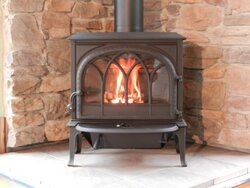
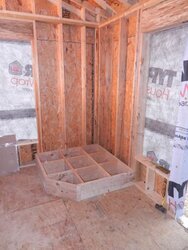
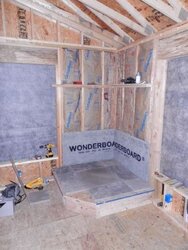
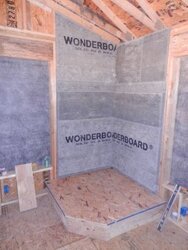
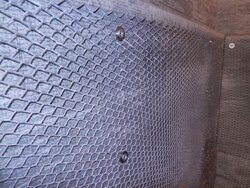
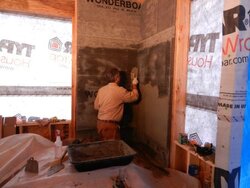
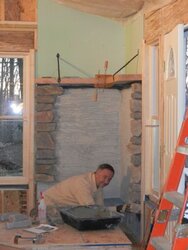
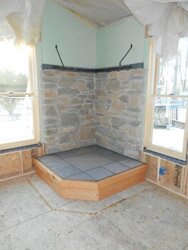
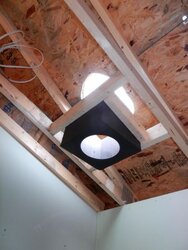
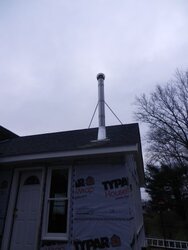
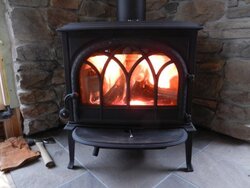
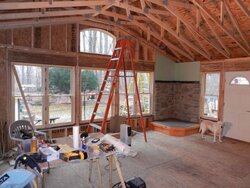
 .....
.....